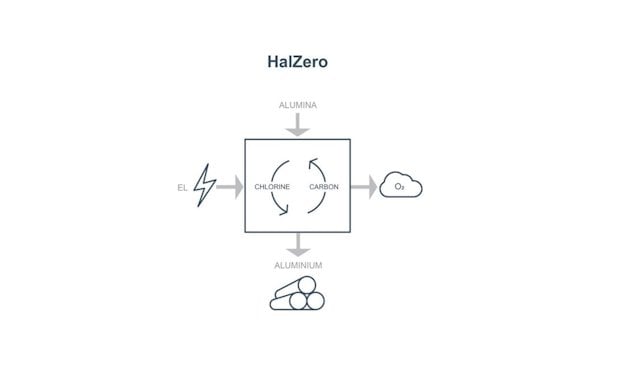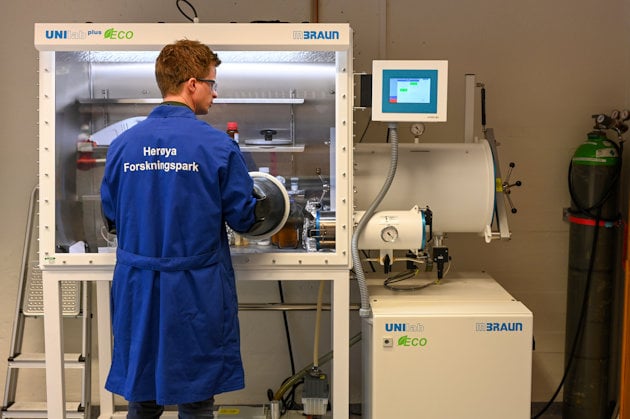The road to net-zero carbon emissions in aluminium production is a long haul, but Hydro has made great strides in the last three decades, cutting CO2 emissions at its Norwegian primary aluminium plants by 70 percent since 1990. The next advancements will be driven by more recycling, carbon capture and storage, and the development of new production processes.
With today’s electrolysis technology, CO2 is emitted when electricity makes aluminium oxide, or alumina, react with carbon to form primary aluminium. The proprietary HalZero* technology is based on converting alumina to aluminium chloride prior to electrolysis. Chlorine and carbon are kept in a closed loop, thus eliminating emissions of CO2 and emitting oxygen instead.
If successful, HalZero will fully decarbonize the smelting of aluminium by eliminating emissions from both electrolysis and anode baking. This will result in emission-free smelting technology.

Status and way forward
At Hydro’s research and development laboratory in Porsgrunn, Norway, technologists have successfully tested and modeled the HalZero process. Following this work, they are now verifying the technology in test scale. The ambition is to produce the first aluminium by 2025 and to reach industrial-scale pilot volumes by 2030.
Significant research is still required to mature the HalZero process toward industrialization, but the process design studies and initial lab tests have shown that an industrial-scale HalZero plant will have power consumption and operating expenditure in the same range as current electrolysis technology. Capital expenditure for a full-scale HalZero smelter is expected to be comparable to new conventional smelter capacity. HalZero will be applicable for both greenfield aluminium plants or brownfield replacement of obsolete potlines, where the smelter infrastructure can be re-used.

Scaling up pilot testing will require significant investment and public-private partnerships. In 2023 the Norwegian state enterprise Enova granted NOK 141 million for the construction and operation of the test facility in Porsgrunn.
The test facility will be up and running by 2025, an important step towards the goal to make the HalZero technology viable for implementation in new electrolysis capacity. This is where our team of world-class scientists will be working to mature the different HalZero process steps towards our goal of building an industrial scale pilot towards the end of the decade.
*The name HalZero alludes to the common way of naming Hydro Aluminium cell technology – HAL – and our promise to deliver zero emissions.
Uppdaterad: 5 januari 2024